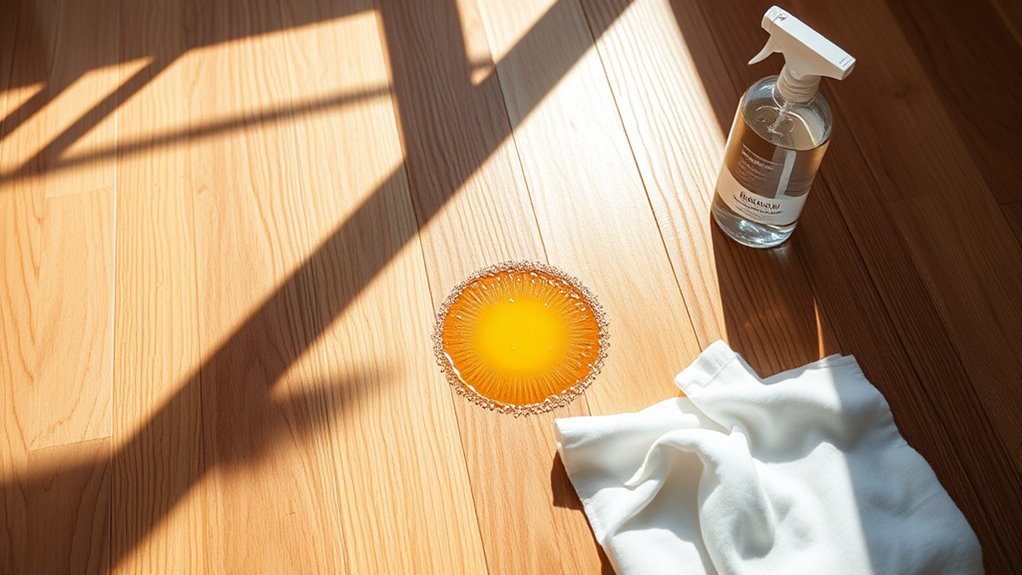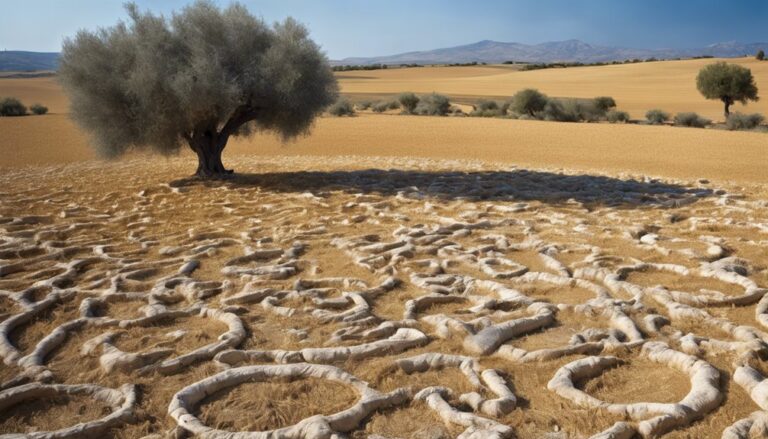To get pee stains out of your wood floor, first blot fresh spills gently without rubbing. For dried stains, carefully scrape residue and clean with a cloth dampened in mild dish soap and warm water, avoiding soaking the wood. Use natural solutions like baking soda and vinegar to neutralize odors without harming the finish. Seal your floor afterward to protect against future damage. If you want to know how to handle tougher stains or which cleaners work best, there’s more to explore.
Identifying the Type of Wood and Finish
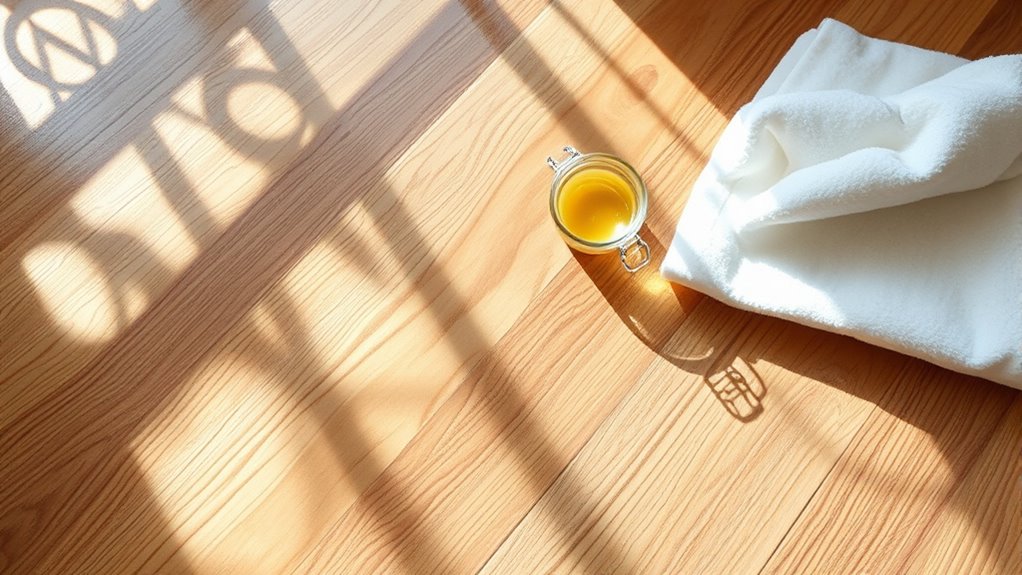
Before you tackle removing pee stains, you need to identify the type of wood and finish on your floor. Hardwood characteristics like grain pattern, color, and hardness help you pinpoint the species—oak, maple, or pine, for example. Each reacts differently to cleaning methods, so knowing your wood’s traits guarantees you don’t cause damage. Next, determine the finish type: polyurethane, varnish, shellac, or wax. These finishes vary in durability and water resistance, affecting how stains penetrate and how aggressive your cleaning can be. Polyurethane is common and tough, while wax requires gentler care. Identifying both wood and finish types gives you the freedom to choose the right stain removal approach confidently, preserving your floor’s integrity and appearance without guesswork or harm.
Initial Cleaning Steps for Fresh Stains
When you notice a fresh pee stain on your wood floor, act quickly to prevent it from soaking in. First, blot the area gently with a clean, absorbent cloth or paper towel—avoid rubbing, as that can push the liquid deeper. Use a minimal amount of water to slightly dampen the cloth if needed, but don’t soak the wood. Next, apply a mild cleaning solution, like a mixture of water and a few drops of dish soap, to the stain. Gently wipe the area with a soft cloth, following the wood grain. Afterward, dry the spot thoroughly with a dry towel to avoid moisture damage. These initial cleaning techniques for fresh stains help stop odors and prevent long-term damage to your wood floor.
Removing Dried Pee Stains Safely
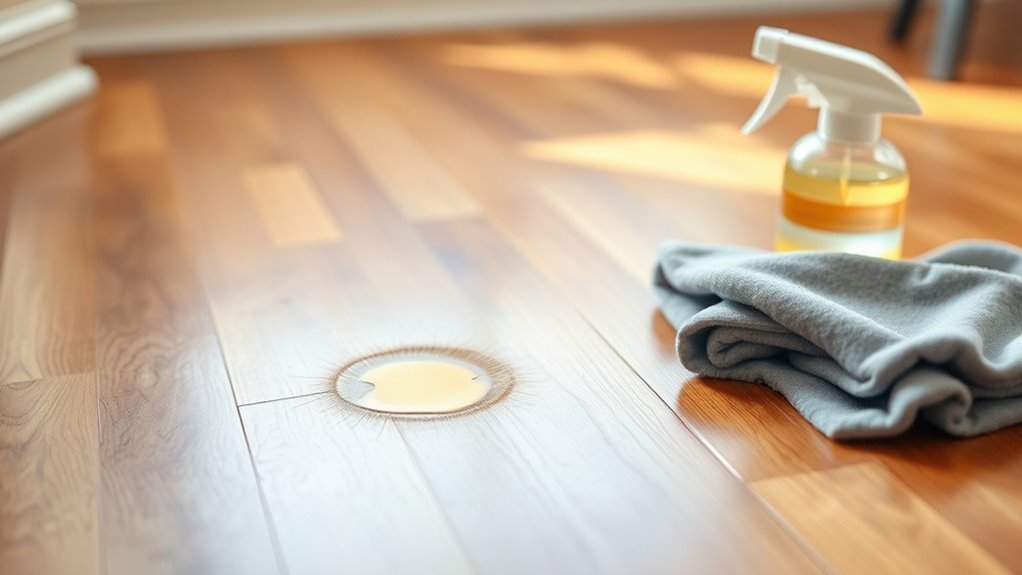
Though dried pee stains can be tougher to remove, you can still restore your wood floor with the right approach. Start by gently scraping off any residue with a plastic scraper to avoid damaging the wood. Next, dampen a soft cloth with a mixture of mild dish soap and warm water, then gently scrub the stained area. Avoid soaking the wood, as excess moisture can cause damage. For stubborn dried stains, use a specialized wood cleaner or a diluted vinegar solution, applying it carefully and wiping immediately. Always test your cleaning techniques on an inconspicuous spot first to verify no discoloration occurs. Finally, dry the area thoroughly with a clean cloth to prevent moisture absorption. Following these steps helps you safely tackle dried stains while preserving your floor’s finish.
Using Natural Remedies to Eliminate Odors
You can use vinegar and baking soda to neutralize pee odors naturally without harsh chemicals. Applying these ingredients methodically helps break down the smell while protecting your wood floor. Adding a few drops of essential oils can further refresh the area with a pleasant scent.
Vinegar and Baking Soda
Sprinkle baking soda generously over the pee-stained area to absorb moisture and neutralize odors. After letting it sit for 10 minutes, spray a solution of equal parts white vinegar and water. The vinegar benefits include breaking down uric acid crystals and disinfecting the wood without harsh chemicals. Let it fizz and work for 5 minutes, then wipe clean with a damp cloth. This combo naturally lifts stains and leaves your floor fresh.
| Step | Purpose |
|---|---|
| Apply baking soda | Absorb moisture, neutralize odor |
| Wait 10 minutes | Allow absorption |
| Spray vinegar mix | Break down stains, disinfect |
| Wait 5 minutes | Let reaction work |
| Wipe clean | Remove residue and dry |
Using vinegar and baking soda keeps your cleaning routine simple, effective, and chemical-free.
Essential Oils Benefits
Essential oils offer a natural and effective way to eliminate odors from wood floors after cleaning. When you use essential oils, you tap into their powerful cleaning benefits, including antibacterial and deodorizing properties, which help neutralize lingering urine smells. To apply, mix a few drops of oils like lavender, tea tree, or eucalyptus with water in a spray bottle. Lightly mist the affected area after cleaning and allow it to air dry. This method not only removes odors but also adds a fresh, pleasant scent without harsh chemicals. By incorporating essential oils, you maintain your floor’s integrity and enjoy a toxin-free solution, giving you the freedom to keep your home fresh and clean naturally.
When to Use Commercial Wood Floor Cleaners
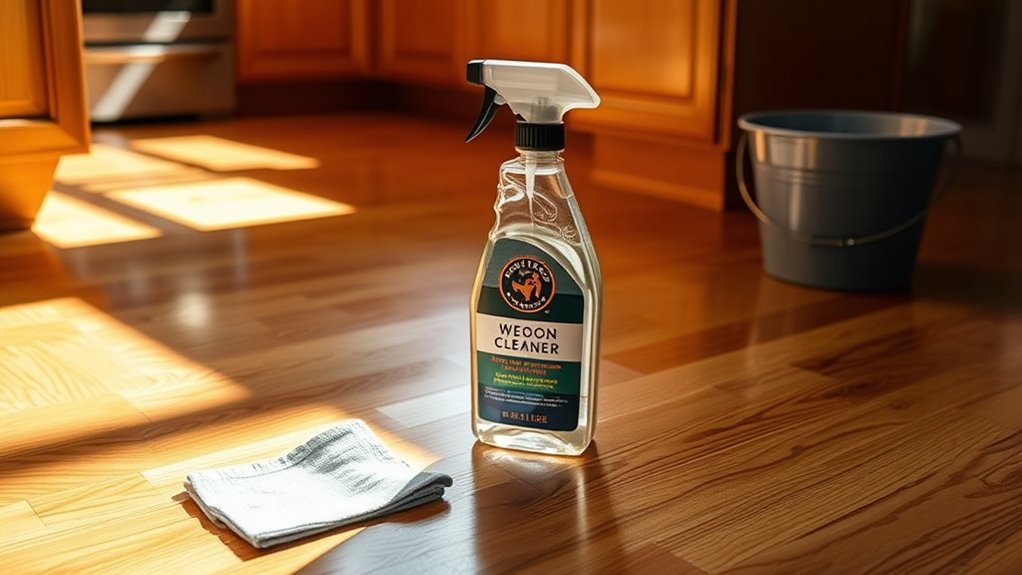
Although homemade solutions often work for fresh or minor pee stains, there are times when commercial wood floor cleaners become necessary. When stains are old, stubborn, or have penetrated deeply, relying on a well-chosen commercial product can save you time and effort. Focus on commercial product selection by checking labels for ingredients designed to break down urine compounds without damaging your wood finish. Look for cleaners specifically formulated for wood floors to guarantee cleaner effectiveness and avoid discoloration or warping. Always test the product on a small, inconspicuous area first. Using the right commercial cleaner lets you tackle tough stains efficiently, maintaining your floor’s appearance and freeing you from lingering odors and marks. This approach balances power and protection, giving you peace of mind.
Preventing Future Pee Stains on Wood Floors
To prevent future pee stains on your wood floors, start by sealing the wood surfaces to create a protective barrier against moisture. You should also place protective mats in areas where accidents are more likely to happen. These steps help minimize damage and make cleanup easier if it occurs.
Seal Wood Surfaces
Since wood is porous, sealing it is essential to prevent future pee stains from soaking in and causing damage. Applying wood sealants creates a protective barrier, making surface protection easier and more effective. Here’s how to seal your wood floors properly:
- Clean the floor thoroughly to remove dirt and residue before sealing.
- Choose a high-quality wood sealant designed for your floor type; water-based sealants are popular for quick drying and durability.
- Apply the sealant evenly using a brush or roller, following the manufacturer’s instructions for drying times and coats.
This process not only guards against stains but also preserves your floor’s natural beauty. By sealing your wood surfaces, you’ll enjoy peace of mind and freedom from worrying about future accidents ruining your floors.
Use Protective Mats
Sealing your wood floors helps protect them from damage, but adding an extra layer of defense can prevent accidents from reaching the surface altogether. Using protective mats is a smart way to guard high-risk areas, especially if pets or children are involved. These mats create a barrier, absorbing spills and preventing moisture from seeping into the wood. When choosing protective mats, consider materials that are waterproof and easy to clean. Also, think about how they complement your existing flooring options to maintain your room’s aesthetic. Place mats near litter boxes, pet feeding stations, or doorways where dirt and moisture accumulate. By integrating protective mats into your routine, you can enjoy the freedom of your space without worrying about future pee stains damaging your wood floors.

